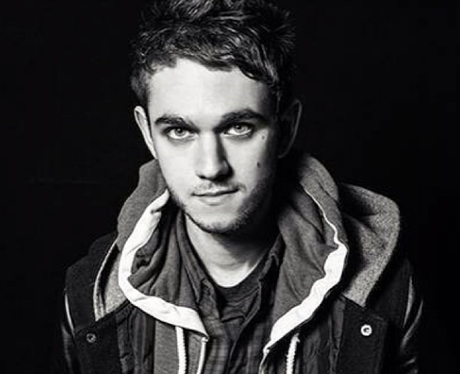

He has crossed over, transcending what it means to be pigeonholed as a “DJ” by developing into a full-fledged electronic artist. Many producers have released EPs in the past that were nothing more than neatly packaged vehicles to redistribute old singles, but Zedd - by creating an album rather than playing the game - has successfully done what few before him have accomplished. At first it was hard to define, but then I realized that Clarity has one thing that so many of today’s dance music productions do not - it has a soul. Zedd’s attention to detail is stunningly thorough, every single beat has been toiled over, worked and re-worked, ad infinitum, until what is left is nothing short of perfection. With each successive listen it becomes more apparent every single note has a purpose, every snare hit and synth squeal was methodically placed and painstakingly produced. There is much more to Clarity than a simple selection of tracks there is an undeniable feeling of intent, an intangible sense that Anton has poured himself into every production on the album. His sound has matured, developing far beyond the type of music that is suitable for a DJ set. Spending time in the studio with the legendary Jimmy Iovine has certainly paid off for Zedd. Anyone who appreciates well-crafted dance-pop should probably keep up with him.One of the most highly anticipated albums of the recent dance music explosion, Clarity is Anton Zaslavski’s magnum opus - a beautifully composed concept album that marks a defining moment in the young producer’s career. "Stache" shamelessly displays the producer's indebtedness to key Justice influence Daft Punk - it might as well be subtitled "Aerodynamic 2K12" - but he's getting there. Zaslavski's not quite in a field of his own yet. The instrumentals tend to be relatively restrained, but most of them are more attractive than the songs featuring big-name vocalists Ryan Tedder and Ellie Goulding. That said, there are plenty of peak moments that reflect the immediacy and desperation of adolescent relationships, like the stadium-ready title song (featuring Louisa Rose Allen, aka Foxes) and the fully developed modern pop of "Spectrum" (fronted in a boyish, bright-eyed manner by Matthew Koma). This plays out like it was developed and arranged for the sake of repeated listening rather than a quick fix for listeners in need of a rush. The song's grand and extended conclusion makes an early-in-the-album statement, however ostentatious, that Zaslavski can compose circles around the majority of EDM producers and do so in a concise fashion. Clarity's lone pre-Interscope track is "Shave It," retitled "Shave It Up," made more musical with an all-strings coda, and yet shortened to a brisk 3:11. He was the drummer in a metalcore band, but he has definitely found his calling here. Zaslavski's rapid ascent says more about his talent and creativity than the lack of skill and imagination required to make dance music. His remixes for the Black Eyed Peas and Lady Gaga, combined with production for Justin Bieber's Believe and singles like "The Anthem," "Shave It," and "Spectrum," made the German musician, still in his early twenties, a rising star in EDM and pop.

In the span of a few years, Anton Zaslavski was inspired by Justice to make electronic dance music, reached out to Skrillex and remixed "Scary Monsters and Nice Sprites," became an in-demand producer of remixes and original material, and signed to mainstream label Interscope.


 0 kommentar(er)
0 kommentar(er)
